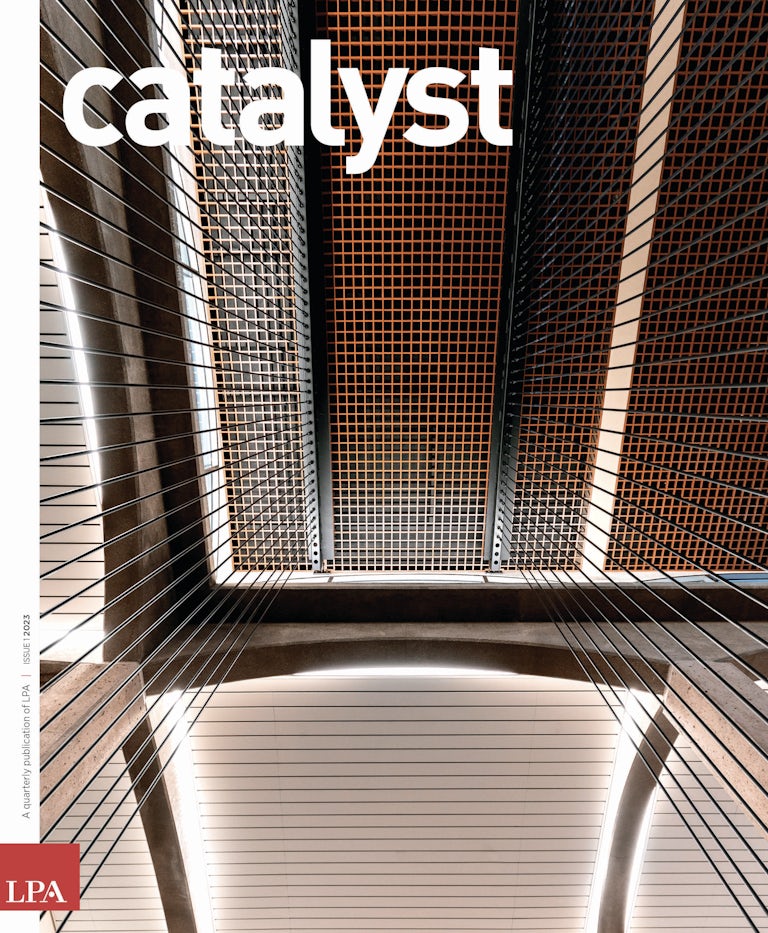A series of case studies illustrating cost-effective, sustainable design solutions that save materials, energy and water.
The Client:
Located on a tight urban site, West Hollywood Aquatic & Recreation Center (ARC) uses every available inch of roof space to accommodate two pools, a green terrace, an elevated recreation deck and a photovoltaic (PV) canopy, all connected to a city park. Achieving the ambitious outdoor program while making room for two separate mechanical systems demanded a holistic design approach.
The Solution:
Designers played a 3D game of Tetris when selecting and placing mechanical equipment for the project. Two chillers were required, one to handle air conditioning loads and another for IT equipment, which needs cooling 24/7. For the main air conditioning system, the team identified a tiny sliver of space on the ground floor where an appropriately sized chiller could be located. For 24-hour loads, they had to be more inventive.
To solve the problem, the design team leveraged the thermal mass of the ARC’s rooftop pools to absorb heat generated by the building’s IT equipment. Here’s how it works: Outdoor swimming pools require heating year-round, while electrical rooms need to be cooled year-round. Seeing an opportunity in the dual requirements, designers integrated a water-cooled variable refrigerant flow (VRF) system with the pool heating system as the heat sink. This strategy consolidates heat generated throughout the building’s data and electrical rooms and transfers that heat to the pool. This helps heat the pool while cooling equipment rooms and decreasing the city’s energy costs. And the VRF system is compact enough to fit in an equipment room on the fourth floor, placed carefully in the void between the recess of the pool and the roof deck.
“The serendipity of this design solution is how it balances simultaneous heating and cooling,” says LPA Director of Engineering Erik Ring. “We’ve got this huge mass of water to be heated, and rooms that need to be cooled. These uses cancel each other out, saving energy and space in the process.”
It’s a relatively small piece of a complicated project, but it is integral to how the building fits into its urban context and makes space for the community. Keeping mechanical systems off the roof enabled the outdoor program to take center stage, coalescing into a seamless, multistory outdoor environment that flows into a newly revitalized West Hollywood Park. From the rooftop, a monumental stair descends three stories toward the park, helping to maximize one of the city’s premier civic spaces. In addition, this design solution increases the space available for the PV system, which contributes to the project’s sustainable performance.
















